Chemical analysis of Leonardo da Vinci’s Mona Lisa and the Last Supper revealed the presence of plumbonacrite and shannonite, rare lead compounds only stable in an alkaline environment. The base layers of the paintings uncovered high lead content in several forms, with shannonite being detected for the first time in a historical painting.

A microsample from the white base layer of the Mona Lisa was analysed using high-angular resolution synchrotron x-ray diffraction and micro-Fourier transform infrared spectroscopy, confirming the presence of lead white – a widely used lead-based white pigment, consisting of two main lead carbonates, hydrocerussite and cerussite. In addition, the diffraction pattern of plumbonacrite was faint but unambiguous, an unexpected result as this rare lead carbonate has not been reported in previous analyses of Italian Renaissance artwork.
Lead oxide was also identified in the Last Supper, a mural in the Convent of Santa Maria delle Grazie in Milan, where Leonardo experimented with the application of drying oil on the wall, enhancing the luminosity of the coloured layers above. For the first time, shannonite was detected in several samples, as well as plumbonacrite in the priming layer of the painting and throughout the coloured paint. Large crystalline PbO particles were also observed and these remained uncarbonated even after 500 years of exposure to the air. The researchers hypothesise that the PbO converts to plumbonacrite in situ from the carbonation of PbO. They allude to a mechanism involving chemical reactions between the oil mixture and PbO, through shannonite as an intermediate. Ultimately, the shannonite converts to hydrocerussite – a major component of lead white.
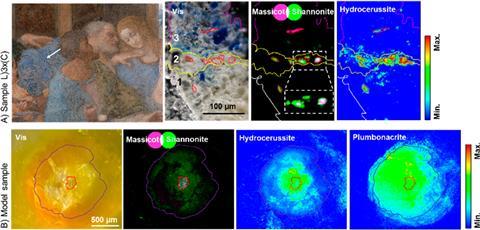
To track the history of the use of these lead compounds, a detailed review of Leonardo’s manuscripts was also conducted. PbO exists as a polymorph with two varieties: litharge (orange red) and massicot (yellow). Both occur naturally as rare minerals and traditional red pigments contain substantial amounts of either forms. It was found that Leonardo made one reference to litharge, in relation to remedies to treat skin and hair. While other mentions are absent, it proves that he had the compound at his disposal and his interest in medicine and science may have influenced his painting techniques.
Highly sensitive probes, coupled with careful data analysis, may uncover similar compounds in other artworks by Leonardo and his contemporaries. As there are no written descriptions of the artist’s recipes to confirm the scientists’ hypotheses, they now plan to further explore the mechanisms that yielded these minerals in the paintings.
References
V Gonzalez at al, J. Am. Chem. Soc., 2023, DOI: 10.1021/jacs.3c07000


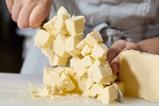

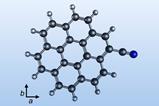



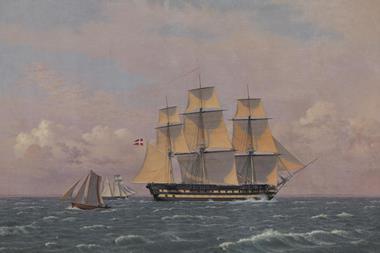
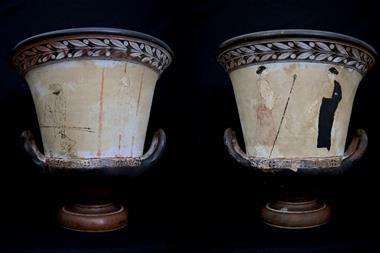







No comments yet